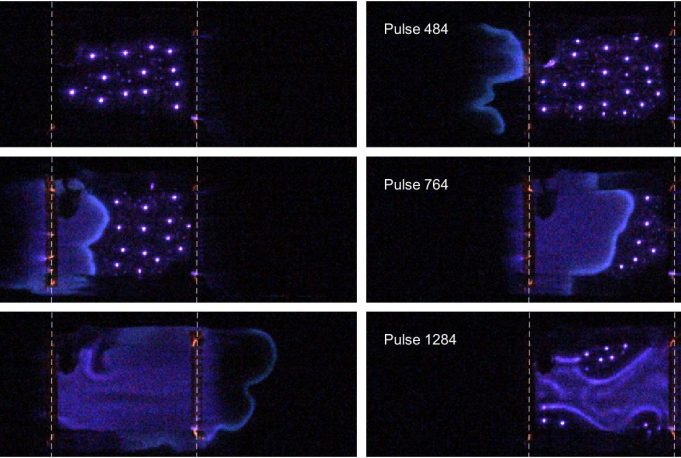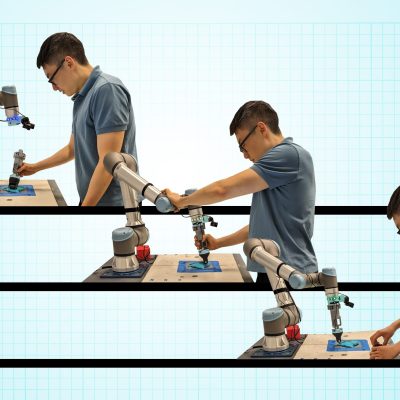
Two-way interactions of plasma and flame in mesoscale conditions
Research from the Aerospace Plasma Group aims to address the “backward problem” of plasma-assisted combustion — the influence of combustion on electrical breakdown and discharge dynamics — by systematically exploring the backward problem in plasma-assisted combustion systems.
Authors: Carmen Guerra-Garcia, Colin Pavan
Citation: 76th Annual Gaseous Electronics Conference, October 10, 2023
Abstract
Plasma technologies offer promising solutions to enhance and control combustion regimes that are inherently challenging. While much research has focused on the forward problem of plasma-assisted combustion, i.e., the ability of impacting ignition and flames using plasma, fewer studies have explored the backward problem, i.e., the influence of combustion on electrical breakdown and discharge dynamics. Our work aims to bridge this gap by systematically exploring the backward problem in plasma-assisted combustion systems. This contribution presents experiments of a laminar premixed methane/air flame, close to the quenching limit, interacting with a pulsed nanosecond dielectric barrier discharge. The flame characteristic dimension, of millimetres, is chosen to be comparable to the inter-electrode gap length, so that the coupled interaction becomes evident. Diagnostics include high-speed video and electrical energy measurements and provide insights into both the forward and backward mechanisms of interaction. Transparent electrodes are used in the experiments to provide a view of the interaction not seen before, including higher-dimensional effects, like enhanced flame wrinkling and flame front attraction by a micro-discharge. This relatively simple setup highlights the intricate coupling between plasma and combustion in dynamic environments. Understanding this two-way interaction is crucial for developing effective plasma control strategies for unsteady combustion processes.

